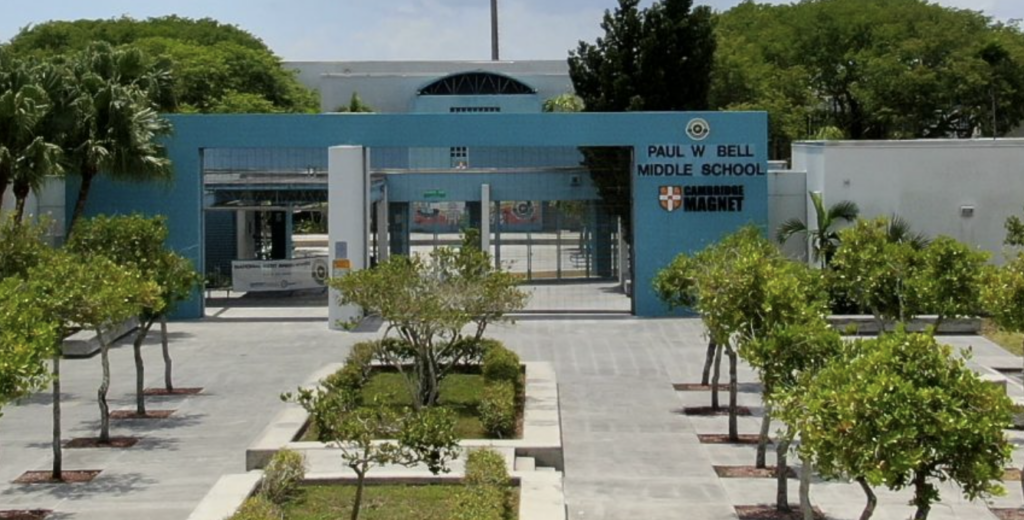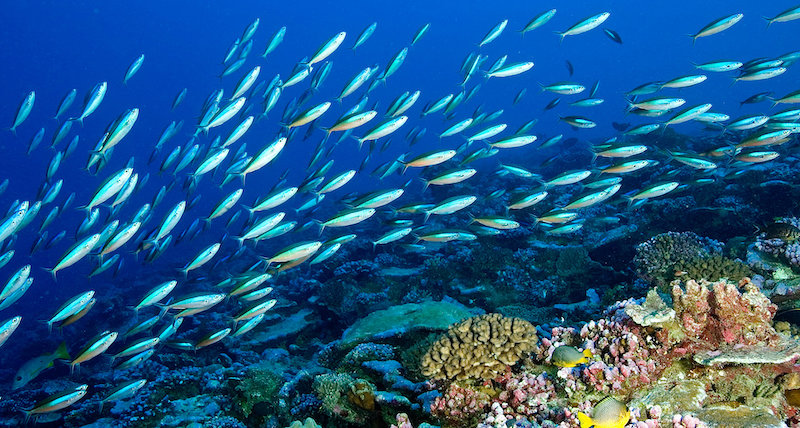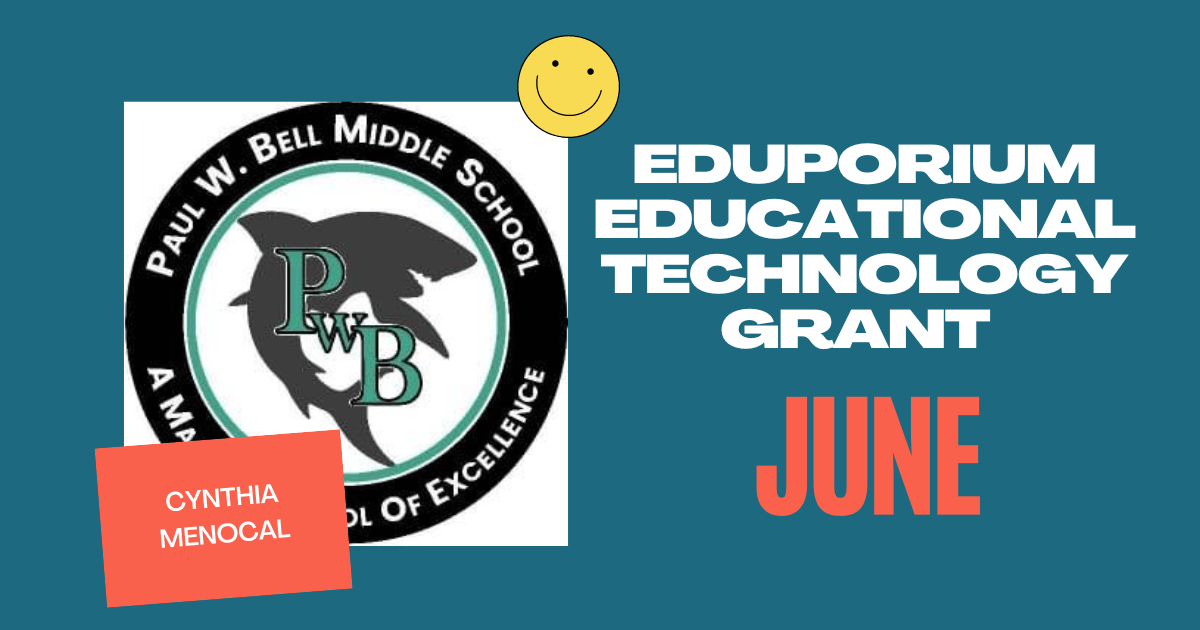For the month of June, we have presented our technology grant to Cynthia Menocal from the Paul W. Bell Middle School in Miami, FL. At her school, Cynthia creates inclusive STEAM learning opportunities for the student body that's comprised of 97 percent Hispanic students. Knowing how students don't always have access to hands-on learning and high-quality STEM opportunities, she's been searching for creative ways to unlock new chances for them. Using grants to maximize her resources, Cynthia came across ours and we're excited to help her facilitate some truly transformative learning for her students—starting with them constructing and interactive oceanic ecosystem mural right in their school's courtyard.
Since they're in Miami and 'Sharks' is their school's nickname, Cynthia's students love exploring tropical marine species in STEAM projects. She'll also be combining numerous elements of both STEM education and real-world skills development along the way. For starters, the students will lead their own research on marine organisms, underwater environments, the importance of ecosystems, and more. Then, besides the research, students will also read nonfiction books, investigate the geography of these environments, and collectively design the mural using a sound scientific approach. She's also planning a field trip to the state Natural Sciences Museum, so children can discover questions to drive research. They'll also determine the most important elements to include in the mural and learn about tropical species in their area.
Creating PBL experiences with this technology grant.
Cynthia's also a project-based learning fan and, after receiving her technology grant materials, she plans to incorporate similar elements. As mentioned, students will begin with some thorough research and, once comfortable with their findings, they'll begin to design and sketch their part of the mural. During this phase, children will have more opportunity to implement design thinking and collaborate with one another. Cynthia wants their final work to be something both kids and adults can learn from—a unique and intriguing wrinkle to an interactive classroom STEM project. And, she also plans to tie in ELA standards while kids research and write about these findings in their journals. In these projects, their note-taking abilities and attention to detail will be tested as kids learn to evaluate key pieces of information, save them for later, and incorporate them in their final projects.

Even before Cynthia receives the technology grant materials, the first part of the project will involve student research. Cynthia will be challenging them all to draw pictures of certain organisms, explain their behavioral adaptations, and clarify how these adaptations help them to survive in their environment. While researching various habitats, students will discover things to include in the final ecosystem they help design. Plus, it will even help them learn what to include in their 3D models of these organisms later on. Also, at every stage of these projects, Cynthia plans to use various formative assessment strategies to gauge student progress. Not only does she want to ensure they're learning key information and beginning to formulate a plan, she's also trying to make sure they're comfortable with all the new knowledge they're discovering.
Tying this project to real-world experiences.
As you probably guessed, this is going to be a long-term project. As such, Cynthia has plans on providing progress reports for every student along the way. These will help inform her instruction and even drive the remainder of student work on their individual and collective projects. Plus, students will be taking detailed project notes so they can see how they progress and grow over time. Additionally, Cynthia is planning on utilizing self-assessments with all students, including reflective questions on what they're learning, where they're struggling, and the next steps of their plan. This is what will eventually help them gain mastery of these concepts and better understand where they need to be.

One other instructional strategy Cynthia plans to incorporate after receiving her technology grant materials is peer coaching. This will involve students interviewing each other about the different processes they went through and potentially further inspiring their peers. She'll even administer various quizzes to check levels of retention and ensure kids understand the elements of the overall ecosystem. Once they start building up the ecosystem, children will include all the different components, like the animals, plant life, and, of course, water. Living in South Florida definitely creates a unique opportunity for this type of hands-on learning and Cynthia plans to make the most out of the technology grant to teach kids about animals and ecosystems.
Cynthia's technology grant materials.
To help Cynthia and these children, we'll be sending some 3D printing supplies as part of the technology grant. They're getting a FlashForge Adventurer 3 V2 3D printer and some cool classroom accessories. As we've said, students will 3D printing the scannable QR codes to place within the ecosystem. This is truly a unique way to combine hands-on learning, 3D design, and emerging technology to illustrate its value in the real world while simultaneously helping the students in their school community learn about all the elements within the ecosystem students build. Plus, since these students haven't had much exposure to technology, this thoughtful project will definitely serve multiple purposes.
Once again, we congratulate Cynthia on her selection as this month's technology grant recipient and thank her for applying. We're very excited to contribute to this project and help create more equitable tech-based learning opportunities for so many students. Specifically for kids who need added inspiration or stimulation beyond traditional instruction, the project is great for enhancing academic engagement. Ultimately, Cynthia is hoping to open new STEAM-related doors for these students and we are excited to assist! If you'd like to apply for our next technology grant, the application for July is now open. Anyone who applies before the July 20 deadline will be in the running for the next award. Follow us on Twitter and Instagram for more.



